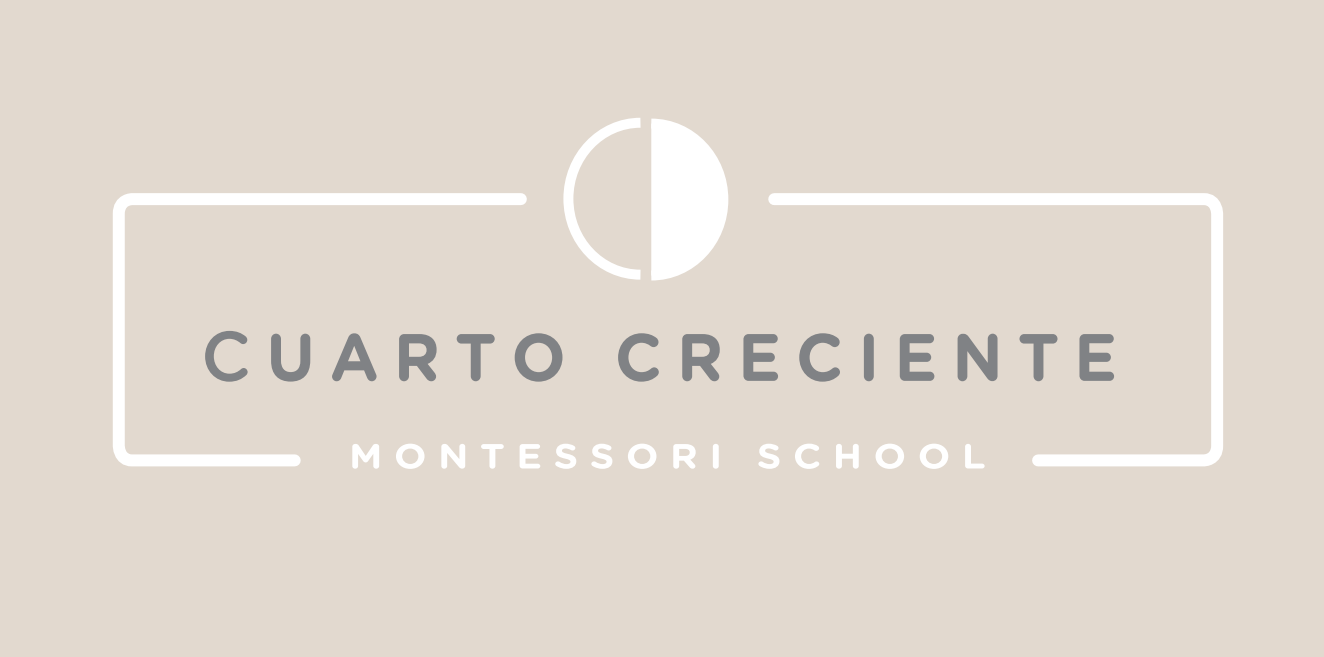
PRESCHOOL: MONTESSORI CHILDREN´S HOUSE
``THE FIRST TASK OF EDUCATION IS TO SHAKE LIFE, BUT LEAVE IT FREE TO BE DEVELOPED.``
Montessori Children’s House corresponds to the second cycle of Preschool Education, so it includes children from 3 to 6 years old. In this period, children are in a phase known as ABSORBENT MIND. This means that through their own Sensitive Periods (a block of time in children’s life when they are ripe to learn something in an exceptionally intense way) and in a prepared environment with suitable stimuli, they learn naturally and absorb information about their environment unconsciously.
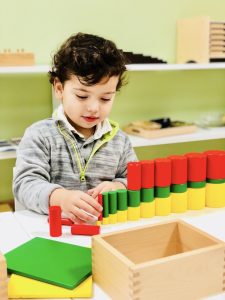
The main characteristic of the Montessori Method is its deep knowledge of the Developmental Psychology (whose central figure is Dr. Jean Piaget, an eminent collaborator of Dr. Montessori). Developmental Psychology brings to light that a child’s brain is not like a miniature version of an adult’s brain, but that it has different structures throughout its development, and therefore, needs to learn in different ways depending on the current stage of development. Accordingly, the brain of children from 3 to 6 years has to learn in a manipulative and experimental manner, since it is not yet prepared for intellectual or abstract learning (that is, not with worksheets).
Throughout her scientific research career, Maria Montessori develops all the material that bears her name and that is the basis of her method: MANIPULATIVES designed with the aim of awakening children’s curiosity and guide them in their desire to learn. To this end materials are grouped by function. As a rule, every material has these four qualities to a greater or lesser degree: Functional, experimental, structural and relational.
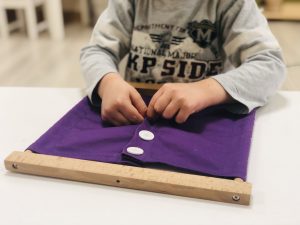
Another characteristic of Montessori materials is that almost all of them are self-correcting, so that no task can be completed incorrectly without the child realizing it by himself or herself. A task done wrong will leave empty spaces or extra pieces.
Most materials in Children’s House are presented to children individually, ensuring that there is an initial contact with each specific area of learning at the right time and at their own pace. In this way, not only the individuality of each child is respected cognitively, but also the specific stage of their development. Children in this age group are still entering in the social stage and need a lot of contact and personalized care. Hence the importance of continuous observation by the guides and the low ratios of our center.
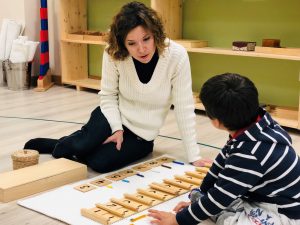
A Montessori classroom is based on the premise of the PREPARED ENVIRONMENT. This means that the classroom is organized in work areas, equipped with child-sized tables and open areas so they can also work on the floor. Materials are also arranged on shelves within reach of children, grouped systematically in distinct subject areas and in order of their complexity. The design is based on the principles of simplicity, beauty and order and, carefully organized by the adult, encourages children’s independence and growth. The work areas in Children’s House are five: Practical Life, Sensorial, Cultural Subjects, Mathematics and Language.
Montessori classrooms gather together children of three age levels into a group. In Children’s House, children of 3, 4 and 5 years share the same space, which brings them considerable benefits in their social, emotional and cognitive development.
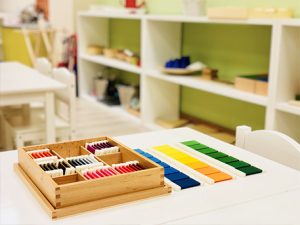
Another key characteristic is the role of the adult as a guide and observer. They allow children to act without constantly depending on the adult, expressing their creativity, curiosity and ability to think for themselves.
Finally, in Cuarto Creciente Montessori School students in Children’s House have a first contact with music, painting, garden work, psychomotricity and sensory experimentation in the daily workshops during school hours, not forgetting that all this takes place in a bilingual environment ENGLISH/SPANISH, with FRENCH subject.

It is worth noting that the contrast between a Montessori center and a traditional one does not lie in WHAT children learn, but HOW they learn it. That is what makes the difference that enables children to learn by enjoying and retaining naturally, in order to avoid forgetting what has been learned and loosing the innate passion for learning about the world around them, and to preserve the self-esteem that makes them feel capable and happy. Strong foundations are therefore established to continue learning more complex concepts ad infinitum.
